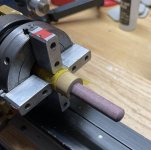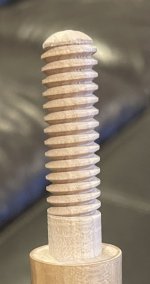Biloxi69
Registered
Hello everyone,
I’ve attached an example pic of a wooden thread pin that’s broken. I get a few of those for repair every so often but I always suggest they buy a new shaft for about 125.00 online. Is this worth the trouble repairing vs buying a new shaft. 90% of the guys that plays carom billiards at my area have these kind of joints. To repair this, first I would need to invest in a tap/dye 1/2x10. Not sure where I can find a set. Face off the broken wooden pin and tap/drill like putting on a new tenon. Make a new wood pin to insert. What are your thoughts?
Thanks in advance,
I’ve attached an example pic of a wooden thread pin that’s broken. I get a few of those for repair every so often but I always suggest they buy a new shaft for about 125.00 online. Is this worth the trouble repairing vs buying a new shaft. 90% of the guys that plays carom billiards at my area have these kind of joints. To repair this, first I would need to invest in a tap/dye 1/2x10. Not sure where I can find a set. Face off the broken wooden pin and tap/drill like putting on a new tenon. Make a new wood pin to insert. What are your thoughts?
Thanks in advance,



